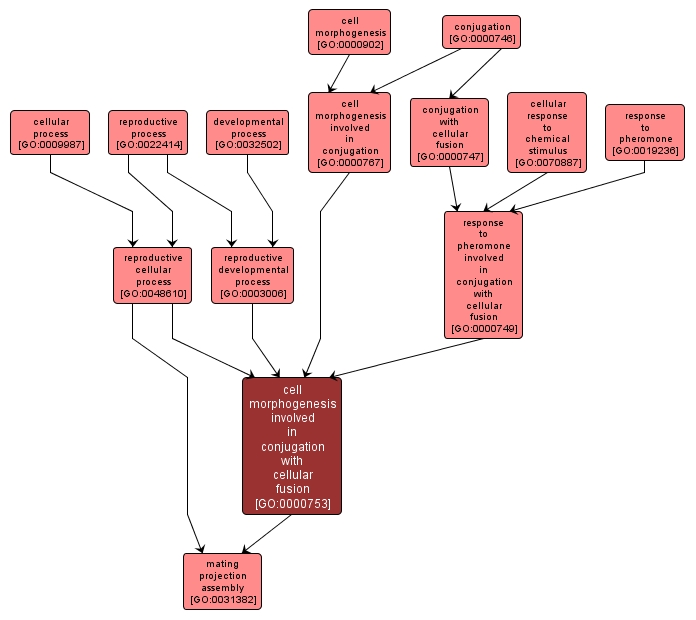GO TERM SUMMARY
|
| Name: |
cell morphogenesis involved in conjugation with cellular fusion |
| Acc: |
GO:0000753 |
| Aspect: |
Biological Process |
| Desc: |
The change in form (cell shape and size) that occurs during sexual reproduction in order to facilitate direct contact between the compatible mating types in organisms that undergo conjugation cellular fusion. |
Synonyms:
- shmooing
- shmoo orientation
- GO:0007332
|
|

|
INTERACTIVE GO GRAPH
|














